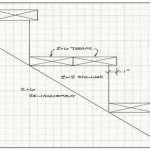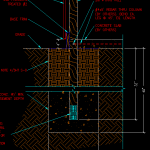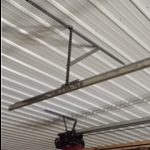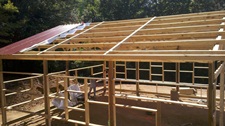This Wednesday the Pole Barn Guru addresses reader questions about common gable post frame footings, weight limitations for a building delivery and the possible solutions, and what types of foundations Hansen Buildings can design for in Weld County Colorado.
DEAR POLE BARN GURU: What is a common gable post footing compared to a main truss post footing, where are these located on a building? ELLIOT in PINEHURST
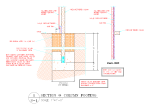 DEAR ELLIOT: Most post frame buildings are rectangular, with peaks (a point or gable) on opposite ends. Building codes require a minimum footing thickness of six inches, or an ICC-ESR approved alternative (like these https://www.hansenpolebuildings.com/2014/05/footingpad/). Main truss post footings will be located along the eave (side snow slides off of) and support roof trusses (hence ‘main truss post’). As they carry more weight than endwall (peak of roof ends) columns, they will typically be larger in diameter. Your building’s engineer sealed plans will specify locations and diameters required to adequately support weight of building (including applied loads). This is not a place to guess or scrimp, as you really wouldn’t be happy with any of your columns settling.
DEAR ELLIOT: Most post frame buildings are rectangular, with peaks (a point or gable) on opposite ends. Building codes require a minimum footing thickness of six inches, or an ICC-ESR approved alternative (like these https://www.hansenpolebuildings.com/2014/05/footingpad/). Main truss post footings will be located along the eave (side snow slides off of) and support roof trusses (hence ‘main truss post’). As they carry more weight than endwall (peak of roof ends) columns, they will typically be larger in diameter. Your building’s engineer sealed plans will specify locations and diameters required to adequately support weight of building (including applied loads). This is not a place to guess or scrimp, as you really wouldn’t be happy with any of your columns settling.
DEAR POLE BARN GURU: 50x 50 x 16 pole barn approximate weight, limited by bridge on property? NEIL in TULSA
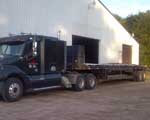 DEAR NEIL: A far greater issue than weight of your building package (roughly 20,000 pounds total depending upon features) will be weight of trucks making deliveries (many weigh 32-40,000 pounds when empty). We have had many clients in a similar situation to yours and materials can often be offloaded onto a flat trailer you can pull behind a pickup, or similar, in order to get into challenging jobsites. Biggest concern will be 50 foot long roof trusses, as truss truck is going to be a semi pulling usually a 48 foot long trailer. You might want to consider making a donation to your local high school’s football team in order to have them physically pick up and carry individual trusses across bridge and to your site.
DEAR NEIL: A far greater issue than weight of your building package (roughly 20,000 pounds total depending upon features) will be weight of trucks making deliveries (many weigh 32-40,000 pounds when empty). We have had many clients in a similar situation to yours and materials can often be offloaded onto a flat trailer you can pull behind a pickup, or similar, in order to get into challenging jobsites. Biggest concern will be 50 foot long roof trusses, as truss truck is going to be a semi pulling usually a 48 foot long trailer. You might want to consider making a donation to your local high school’s football team in order to have them physically pick up and carry individual trusses across bridge and to your site.
DEAR POLE BARN GURU: What type of foundations are used in Weld County, CO for pole barn homes? Insulated slab on grade? Crawl space? BRENT in KERSEY
 DEAR BRENT: We have provided roughly 300 fully engineered post frame buildings to our clients in Colorado (many of these in Weld County). Types of foundations for post frame homes are nearly as varied as are our clients. We’ve done full or partial basements (including walkout or daylight) in block, poured concrete or ICF; crawl spaces (both conditioned and non-conditioned) as well as slabs on grade (both with heated slabs and under floor insulation or unheated slabs with perimeter insulation). Embedded columns are going to be least expensive and strongest, however we can also design and provide for cases with ICC-ESR approved wet set brackets. With most sites in Colorado, it is beneficial to involve a Geotechnical engineer to do a proper assessment of your site’s soil conditions and bearing capacity in order to assure best outcome. Often jurisdictions will make this a requirement. Here is some extended reading on slabs vs. crawl spaces: https://www.hansenpolebuildings.com/2019/03/slab-on-grade-or-crawl-space/
DEAR BRENT: We have provided roughly 300 fully engineered post frame buildings to our clients in Colorado (many of these in Weld County). Types of foundations for post frame homes are nearly as varied as are our clients. We’ve done full or partial basements (including walkout or daylight) in block, poured concrete or ICF; crawl spaces (both conditioned and non-conditioned) as well as slabs on grade (both with heated slabs and under floor insulation or unheated slabs with perimeter insulation). Embedded columns are going to be least expensive and strongest, however we can also design and provide for cases with ICC-ESR approved wet set brackets. With most sites in Colorado, it is beneficial to involve a Geotechnical engineer to do a proper assessment of your site’s soil conditions and bearing capacity in order to assure best outcome. Often jurisdictions will make this a requirement. Here is some extended reading on slabs vs. crawl spaces: https://www.hansenpolebuildings.com/2019/03/slab-on-grade-or-crawl-space/
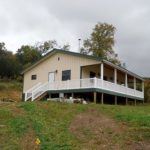 DEAR POLE BARN GURU: Hey thank you for time. I am wanting to build a 50×100′ shop. I have uneven ground and about a 4-5′ fall in the back. What is the best foundation for a post frame building for that situation. Any help would be greatly appreciated! ANDREW in APPLING
DEAR POLE BARN GURU: Hey thank you for time. I am wanting to build a 50×100′ shop. I have uneven ground and about a 4-5′ fall in the back. What is the best foundation for a post frame building for that situation. Any help would be greatly appreciated! ANDREW in APPLING DEAR KEITH: Thank you for making me smile! I will answer as many questions as you need answers for.
DEAR KEITH: Thank you for making me smile! I will answer as many questions as you need answers for.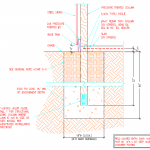 DEAR JOHN: 4×4 posts would not be adequate for even a very small post frame building. I would avoid steel due to its unforgiving nature (everything has to be spot on), challenges of thermal conductivity and connections between structural steel and wood. My preference (in my ideal dream world) would be glulaminated columns, embedded in ground, with a mono-poured concrete footing/bottom collar. This would provide greatest strength and reliability at an affordable price point.
DEAR JOHN: 4×4 posts would not be adequate for even a very small post frame building. I would avoid steel due to its unforgiving nature (everything has to be spot on), challenges of thermal conductivity and connections between structural steel and wood. My preference (in my ideal dream world) would be glulaminated columns, embedded in ground, with a mono-poured concrete footing/bottom collar. This would provide greatest strength and reliability at an affordable price point.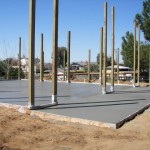 DEAR POLE BARN GURU:
DEAR POLE BARN GURU: 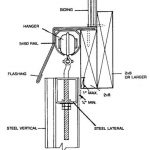
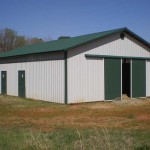 DEAR POLE BARN GURU: I need two metal sliding barn doors. Each door 6’ x 8.5‘. DAVID in RUTHERFORDTON
DEAR POLE BARN GURU: I need two metal sliding barn doors. Each door 6’ x 8.5‘. DAVID in RUTHERFORDTON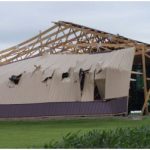 DEAR DEAN: I can’t say I am a huge fan of rebuilds for several reasons – damaged materials end up being used and it is pretty well impossible to keep from having holes in the roof steel which are going to cause leaks.
DEAR DEAN: I can’t say I am a huge fan of rebuilds for several reasons – damaged materials end up being used and it is pretty well impossible to keep from having holes in the roof steel which are going to cause leaks.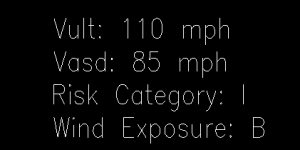
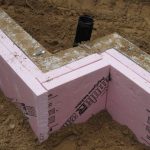 DEAR CAMERON: You can do a Shallow Frost-Protected Foundation without having to thicken the slab edge – you can backfill on the inside of the vertical insulation board with sand. In the event your Building Official requires this to be added to your plans and sealed by the engineer, there would be an added investment for redrafting and sealing two new sets. For more reading:
DEAR CAMERON: You can do a Shallow Frost-Protected Foundation without having to thicken the slab edge – you can backfill on the inside of the vertical insulation board with sand. In the event your Building Official requires this to be added to your plans and sealed by the engineer, there would be an added investment for redrafting and sealing two new sets. For more reading: 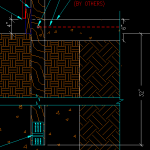 DEAR ERIC: I’d do a Frost Protected Shallow Foundation using embedded columns with a concrete footing below and a bottom collar which would be 24 inches or more below grade. I’d backfill the inside of the vertical insulation with sand and pour a slab on grade. Read more here:
DEAR ERIC: I’d do a Frost Protected Shallow Foundation using embedded columns with a concrete footing below and a bottom collar which would be 24 inches or more below grade. I’d backfill the inside of the vertical insulation with sand and pour a slab on grade. Read more here: 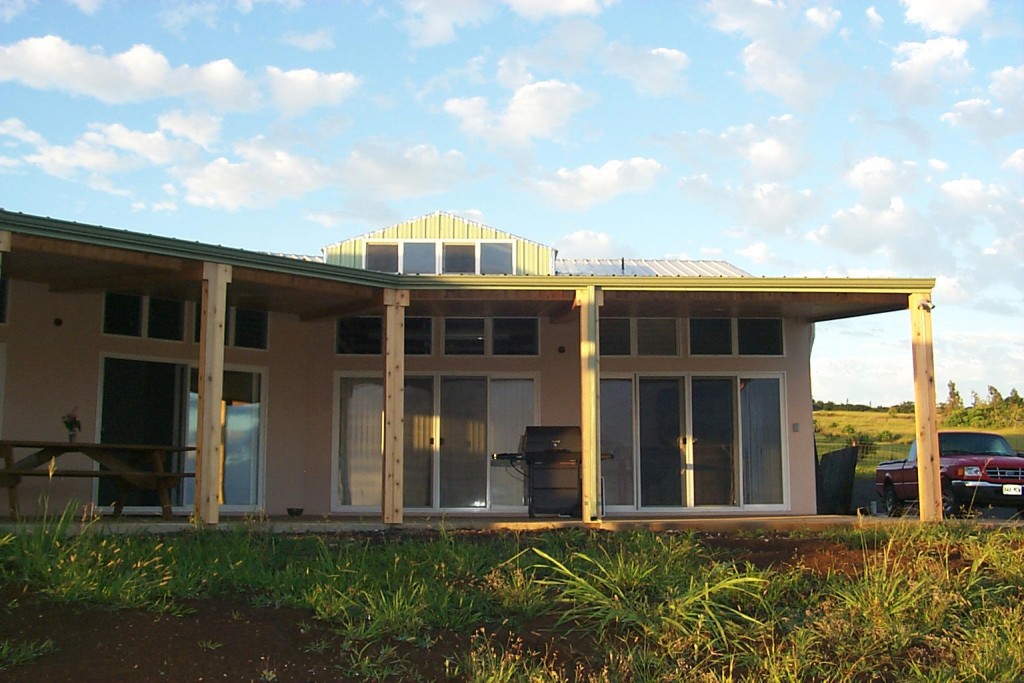 DEAR MARC: We’ve provided many post frame building kits to the Hawaiian Islands and our system is set up so all pressure preservative treated lumber is automatically selected for buildings going to Hawaii. Generally buildings for Hawaii are shipped in containers from the Port of Seattle, as shipping costs are lower than obtaining the components on the islands.
DEAR MARC: We’ve provided many post frame building kits to the Hawaiian Islands and our system is set up so all pressure preservative treated lumber is automatically selected for buildings going to Hawaii. Generally buildings for Hawaii are shipped in containers from the Port of Seattle, as shipping costs are lower than obtaining the components on the islands.